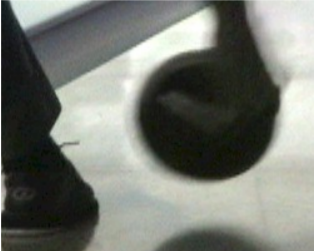
The Importance of Timing
What is timing, and how do I correct it? This is a question most bowlers have at one time or another, so let’s talk about it.
What is Timing?
Timing is the synchronization of your feet and your arm swing. There is no magic timing, just your personal timing. Timing can be roller (early), neutral (“textbook”), or leverage (late). However, we’ve learned that there is no timing that always works or always doesn’t work, particularly with timing at the release point. There are world-class players with roller, neutral, and leverage timing at the release point.
Efficiency is More Important than Absolute Timing
If you properly co-ordinate the movements of your feet and your swing, the result can be a coordinated, effortless swing. What really matters is if the movements of the upper and lower body make sense for your game. When people talk about timing, it is usually timing at the release point. However, I mentioned above that you can be a great player with any form of timing, so what is really important?
Neutral or “Textbook” Timing
There is an “ideal” timing point for each step in the approach, which is referred to as neutral timing. This simply means that the upper and lower body have both completed the same amount of the swing. In the first of the last four steps, this means that the ball has started into the downswing as the first of the last four steps is in full contact with the approach. On step twp of four, the ball is at the bottom of the swing as the step is on the approach. On step three of four the ball is at the highest point in the backswing as the third step is on the approach. At the finish point, the slide shoe stops at the same time the ball is released.
Roller Timing
If the swing is ahead of the body at any point in the swing, the player has roller timing at that step in the swing. For example, if the ball is well into the swing on the first of the last four steps, this is consider roller timing at step 1. If the ball is coming down from the top of the backswing as the third step hits the approach, this is roller timing. If the ball is released while the player is still sliding, this is roller timing.
Leverage Timing
If the feet are ahead of the upper body at any point in the swing, the player has leverage timing at that step in the swing. For example, if the ball has not started into the downswing at the end of the first of the last four steps, the player has leverage timing on step one. If the ball is still going up and the player has completed the third step, the player has leverage timing. If the slide has completed and the ball has not yet been release, this is leverage timing at the release.
When is This a Problem?
Timing must be changed when the upper and lower body are not coordinated. For example, leverage timing is fine if the player can allow the downswing to finish and release. It is a problem is the player has to pull down to complete the swing, causing inconsistency in the release. By studying video coaches can determine if the coordination between the upper and lower body is part of how you play or a liability.
First, if you start the swing too quick, or pull the ball into the backswing, you will need to catch up to the swing. In this shot, the bowler has early timing, where the ball gets to the release point just ahead of the slide stopping.
If you have roller timing and it is a liability, there are some things you can do. You can make your takeaway move start later, or start the ball higher to make your swing longer, or speed up your feet. You and your coach will need to determine the right answer for your game.

Now, from the side, here is an example of leverage timing. The ball has stopped and the armswing is still coming down.

Timing Can Vary from Step to Step
Just because you start roller doesn’t mean that you can’t end up leverage. Most power players actually have roller timing in the early part of their swings, but because they have very long swings their feet catch up to the swing. Here, the swing gets started early. In the first of four steps (his second), he get the ball into the swing quickly. However, due to a very free armswinghe quickly gets the ball into his backswing. This timing looks like it is roller, and it is. However, due to the length of his backswing, his timing is leverage by the time he arrives at the release position, shown immediately above.
So, if you start early, you may still end up late, and that’s the primary concern in the swing. As another example, my timing starts late, gets earlier, and finally ends up in nearly the same position as above, but by a different route.

Can roller or leverage timing affect your armswing and your game? Yes, but not in all cases. If your roller timing causes you to take an un-natural pause in your swing to compensate, then it might be time for a correction. Generally speaking, if you can correct the point at which your ball starts down into the swing and keep your armswing free and your feet moving in a comfortable rhythm with your armswing, you will have the best chance to repeat shots. The key is to work with a coach to identify the portion of the swing that causes inconsistency and change it. Usually, this will be early in the swing, and changing it to better coordinate the upper and lower body will fix issues later in the swing.
When you take a shot you either feel coordiation between your upper and lower body throughout the swing or you feel some source that causes the upper and lower parts of your body to fight each other. If the latter is the case, you will need to work with your coach to correct the issue.